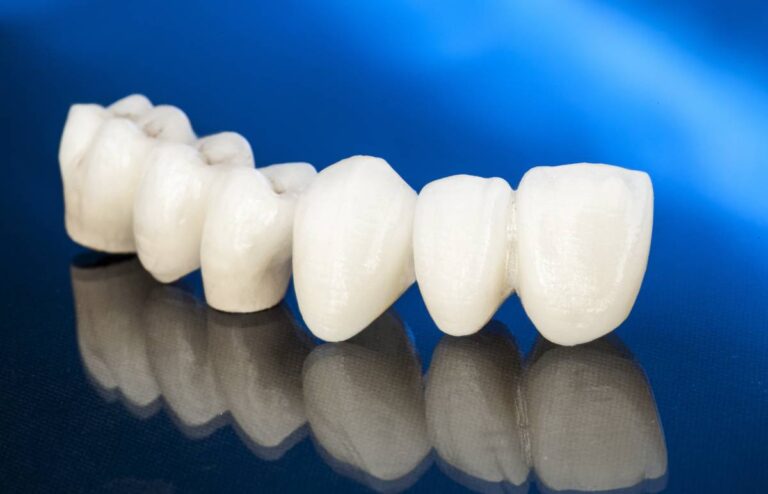What are dental crowns made of you ask? A dental crown is essentially a covering that is placed over your tooth to improve its appearance, shape, size, and strength. Crowns completely cover the visible tooth that lies at or above the gum line. They may be needed in many situations, including
- Protecting a tooth from breaking
- Holding together parts of a broken tooth
- Supporting a tooth with a large filling
- Holding a dental bridge in place or covering a dental implant
- Cover discolored or misshaped teeth
They can also be used on children to protect teeth damaged by decay or at risk for being damaged by decay.
Types of Dental Crowns
There are many types of crowns and they all have situations to which they are best suited.
1. Stainless steel crowns are often used temporarily on permanent teeth while a permanent crown or filling is being made. Stainless steel is also used on children with tooth decay.
2. Metals are often used for molars. They don’t require as much tooth structure to be removed, and are very strong. They are able to withstand biting and chewing well, and rarely chip or break. However, their metallic color is sometimes a drawback.
3. While porcelain-fused-to-metal crowns are similar to metal, they can blend with other teeth but are more likely to chip, break, and wear down surrounding teeth.
4. All-resin crowns are a less expensive option. However, these will chip or break more often than other kinds.
5. All-ceramic or all-porcelain are able to match surrounding teeth the best but they also chip, break, and wear down teeth more. These are best used in the front.
6. Zirconium crowns are very durable. The procedure will require less of your original tooth to be removed than with many other kinds. However, these can be abrasive to other teeth.
Durability
Crowns can last anywhere from 5 to 15 years before needing replacement. This will depend on how much it is used and on oral hygiene. Crowns do not require any special treatment, as long as regular brushing and flossing is used. To expand the life of the crown, avoid using your crown for things like nail biting or opening packaging.
A Multi-Step Procedure
You typically need two visits to the dentist for this procedure. During the first visit, your dentist will begin to shape your tooth to support a crown. Some teeth may need to be filed down, while other weak and decayed teeth may need extra filling. Next, your dentist will take an impression of the tooth, which will be sent to a dental laboratory to be created. For about two weeks, you will have a temporary crown. Once the permanent crown is ready, your dentist will remove the temporary crown and use special adhesive to attach your permanent crown.
Advantages of Dental Crowns
One advantage to crowns is that they do not require any healthy teeth to be removed. Since the crown is specially molded to fit over your damaged tooth, it is a minimally invasive procedure. They are also permanent solutions, and do not require special cleaning.
While dental crowns may not be the right fit for every situation, they are a good option for many oral health problems. They are great for situations when the surface of the tooth is a problem, but the root is intact. Talk to your dentist to see if crowns will be the best way to fix your oral health issues.







